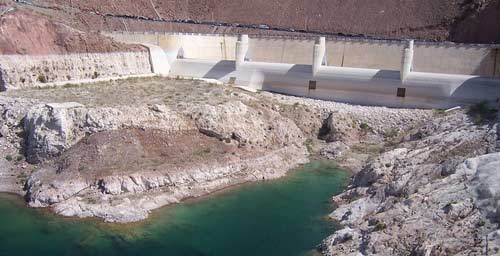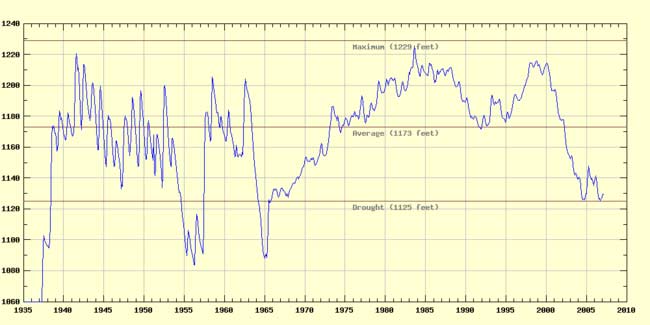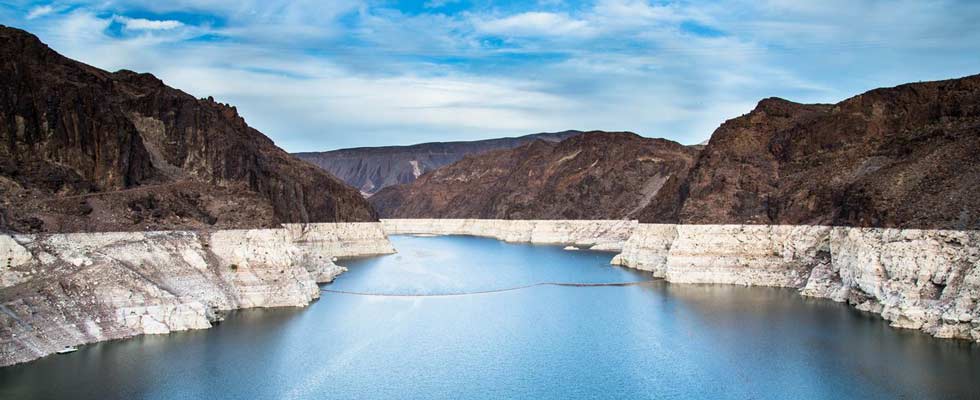Not Looking Good for the Southwestern US: “Mega” Drought Predicted
UPDATE: I located a chart of Lake Mead historical water levels, and put it below the fold (click on “more…”)
MSNBC has an article out today sounding an alarm on the Southwestern United States’ fresh water situation. Not only is the wage gap between rich and poor workers reaching pre-depression levels, we are also threatened by a “dust bowl” similar to the same period of time.
While traveling in Nevada two weeks ago, I was able to travel to see the Hoover Dam and Lake Mead. A thick layer of bleached rock formed a ring around the reservoir, showing the loss of billions of gallons of fresh drinking water. The level of the lake fell a hundred or more feet below a run-off/overflow culvert.
After seeing this first hand it is easy to believe the article:

“If these models are correct, the levels of aridity of the recent multiyear drought, or the Dust Bowl and 1950s droughts, will, within the coming years to decades, become the new climatology of the American Southwest,” the researchers wrote.
In a telephone interview, Seager said that doesn’t mean there would be dust storms like those of the 1930s Dust Bowl, because conditions at that time were also complicated by poor agricultural practices. But he said the reduction in rainfall could be equivalent to those times when thousands of farmers abandoned their parched land and moved away in search of jobs.
Currently, the majority of water in the Southwest is used in agriculture, but the urban population of the region is growing and so the water needs of people are growing as well, he explained.
Combine these conditions with the booming population of Las Vegas (12 cranes in the skies over the city) and other Southwestern US cities, and one can see that questions regarding water supply will have to be answered sooner rather than later.

So you can see that we are not at “historic low levels” for Lake Mead, but certainly flirting with dropping below the “drought” level of 1125 feet. I hope as one of the commenters noted that there will be a spring melt soon and that this will raise the levels in the lake. However as a trend over the past 7 years, it is looking less hopeful.






